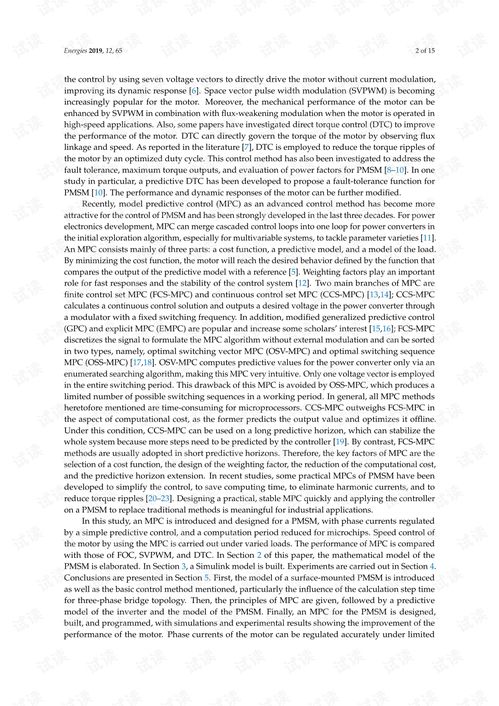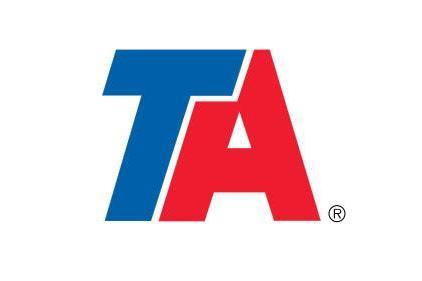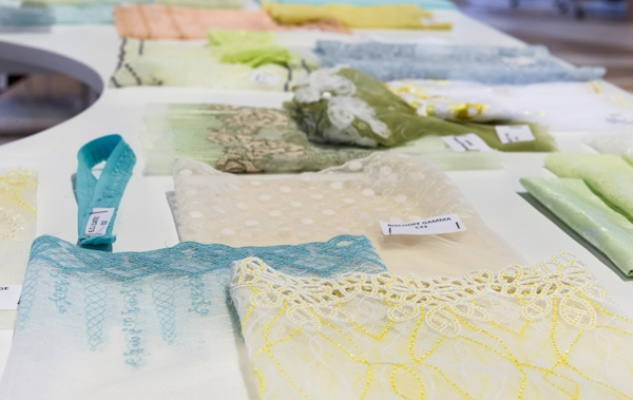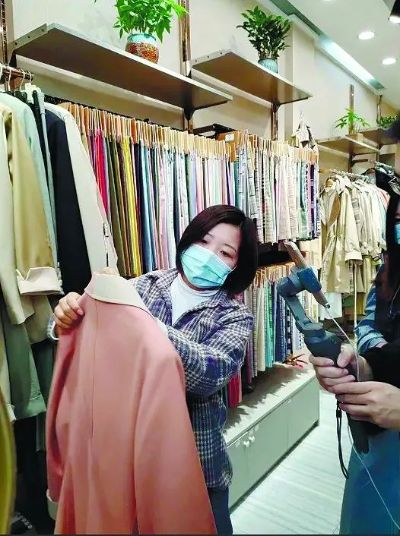Responsibilities of a Textile Tester
A Textile Tester's Responsibilities:,1. Conducting Material Testing: The primary responsibility of a textile tester is to conduct various tests on raw materials, fabrics, and finished products to ensure quality and safety standards are met. This includes testing for colorfastness, flame resistance, tear strength, and other relevant properties.,2. Data Analysis: After each test, the tester must analyze the results to determine if the product meets the required standards. They use statistical methods to interpret the data and provide recommendations for improvement.,3. Documentation: The tester must maintain accurate records of all test results and any issues encountered during the testing process. These records are essential for regulatory compliance and for future reference.,4. Training and Development: As technology advances, the textile tester must stay up-to-date with new testing methods and equipment. They may also be responsible for training new testers or developing standard operating procedures (SOPs) for their team.,5. Quality Control: The textile tester plays a crucial role in maintaining high-quality standards throughout the production process. They work closely with production staff to ensure that all aspects of the manufacturing process meet industry standards.
Introduction: In the world of textiles, quality assurance is paramount. The role of a textile tester is crucial in ensuring that products meet industry standards and consumer expectations. This article will provide an overview of the responsibilities of a textile tester, including their duties, tasks, and how they contribute to the overall success of the textile industry.

Duties:
- Sample Collection: The tester must collect samples from various sources, including raw materials, finished goods, and intermediate products. These samples are used for testing and analysis to identify any defects or issues that need to be addressed.
- Inspection: The tester must inspect the samples for any physical defects, such as color variations, thickness, and size uniformity. They should also examine the samples for any chemical or biological contaminants that may affect the quality of the product.
- Data Collection: The tester must record all relevant data related to the samples, including measurements, observations, and results. This information is essential for tracking progress and making informed decisions about product improvement.
- Quality Control: The tester must work closely with quality control personnel to ensure that all samples meet the required standards. They must communicate any findings or concerns to their supervisors and collaborate on solutions to address any issues.
- Training and Development: The tester must stay up-to-date with the latest industry standards and techniques by attending training sessions and workshops. They should also participate in ongoing professional development activities to enhance their skills and knowledge.
Tasks:
- Sample Preparation: The tester must prepare samples according to the manufacturer's specifications and guidelines. This may include cutting, folding, or other manipulations that affect the final product's appearance and functionality.
- Testing Methods: The tester must select appropriate testing methods based on the type of sample and the intended application. They should use specialized tools and equipment to perform tests accurately and reliably.
- Data Analysis: After completing the testing process, the tester must analyze the data collected to determine if the sample meets the required standards. They should interpret the results and provide clear feedback to the supervisors.
- Report Writing: The tester must prepare detailed reports that summarize the findings of each inspection. These reports should be clear, concise, and easy to understand for both management and end-users.
- Quality Assurance: The tester must collaborate with quality assurance personnel to ensure that all samples meet the required standards. They should work with them to identify potential problems early on and implement corrective measures to prevent future issues.
Case Study: Let's take a look at a real-world example of how a textile tester can contribute to the success of a company. Suppose a textile company is producing high-quality fabrics for clothing brands. To ensure that their products meet consumer expectations, the company hires a textile tester who specializes in detecting defects in fabrics.
The tester works closely with the production team to ensure that all fabric samples are prepared according to the manufacturer's specifications. They use specialized tools and equipment to perform various tests, such as colorfastness and shrinkage, to evaluate the fabric's performance.
After completing the testing process, the tester analyzes the data collected and determines if the fabric meets the required standards. If there are any issues identified, they report them to the production team, who then takes corrective action to address the problem.
By working together with the production team and providing accurate and timely feedback, the textile tester helps the company to improve its products and maintain its reputation as a leader in the textile industry.
Conclusion: In conclusion, the responsibilities of a textile tester are extensive and critical to the success of the textile industry. From collecting and inspecting samples to analyzing data and providing feedback, the tester plays a vital role in ensuring that products meet consumer expectations and industry standards. By staying up-to-date with industry trends and collaborating with quality control personnel, textile testers can help companies achieve their goals and build long-term relationships with customers.
纺织品测试员岗位职责概述

纺织品测试员是负责纺织品质量检测和性能评估的重要岗位,其主要职责包括但不限于以下几个方面:
- 负责纺织品样品的质量检测,确保样品符合相关标准和规定。
- 进行纺织品性能测试,包括纤维含量、织物结构、耐久性、环保性等。
- 收集并整理测试数据,为纺织品生产商提供准确的质量报告。
- 参与纺织品研发和改进工作,为提高纺织品的质量和性能提供技术支持。
具体岗位职责详解
样品检测与评估
(1)负责接收并检查来自生产商的纺织品样品,确保样品符合质量标准和规定。 (2)对样品进行全面的质量检测,包括纤维含量、织物结构、耐久性、环保性等方面的测试。 (3)根据测试结果,为纺织品提供质量报告和建议,为生产商提供参考。
性能测试与数据分析
(1)根据纺织品测试标准,进行各项性能测试,包括拉伸强度、弹性、耐磨性、吸湿性等。 (2)使用专业的测试仪器和设备进行测试,确保测试结果的准确性和可靠性。 (3)收集并整理测试数据,运用统计学和数据分析方法进行深入分析。 (4)根据数据分析结果,提出改进建议和优化方案,为提高纺织品的质量和性能提供技术支持。
沟通协调与团队协作
(1)与生产商、供应商等相关方进行沟通协调,确保测试工作的顺利进行。 (2)与实验室同事保持良好合作关系,共同完成各项测试任务。 (3)参与团队会议,汇报测试进度和结果,提出改进意见和建议。
案例说明

以实际案例为例,说明纺织品测试员的具体岗位职责:
某纺织品公司委托我们进行纺织品质量检测和性能评估,该公司主要生产各类服装面料,需要确保产品的质量和性能符合相关标准和规定。
纺织品测试员在接到任务后,首先对样品进行全面的质量检测,包括纤维含量、织物结构、耐久性等方面的测试,在测试过程中,他们严格按照标准操作流程进行操作,确保测试结果的准确性和可靠性,他们还积极参与研发和改进工作,为提高纺织品的质量和性能提供技术支持,他们为该公司提供了准确的质量报告和建议,帮助该公司提高了产品的质量和性能水平。
英文表格补充说明
以下是英文表格补充说明纺织品测试员的具体岗位职责:
| 岗位职责 | 英文表述 | |
|---|---|---|
| 样品检测与评估 | Sample Testing and Evaluation | 负责接收并检查纺织品样品,确保符合质量标准和规定 |
| 性能测试与数据分析 | Performance Testing and Data Analysis | 进行各项性能测试,如拉伸强度、弹性等,运用统计学和数据分析方法进行深入分析 |
| 沟通协调与团队协作 | Communication and Collaboration | 与生产商、供应商等相关方进行沟通协调,确保测试工作的顺利进行 |
| 工作成果展示 | Work Product Summary | 提供准确的质量报告和建议给生产商参考 |
| 与实验室同事协作情况 | Cooperation with Laboratory Staff | 与实验室同事保持良好合作关系,共同完成各项测试任务 |
| 团队协作与支持情况 | Teamwork and Support | 为提高纺织品的质量和性能提供技术支持,参与团队会议并提出改进意见和建议 |
纺织品测试员是纺织品质量检测和性能评估的重要岗位,需要具备专业的知识和技能,在实际工作中,他们需要严格遵守标准操作流程,确保测试结果的准确性和可靠性,他们还需要积极参与研发和改进工作,为提高纺织品的质量和性能提供技术支持,通过实际案例和英文表格的补充说明,可以更好地了解纺织品测试员的具体岗位职责和工作情况。
Articles related to the knowledge points of this article:
The Branded Textiles and Integrity Service in Lucheng District
Exploring the World of Jilin Textiles:An Unmissable Journey



